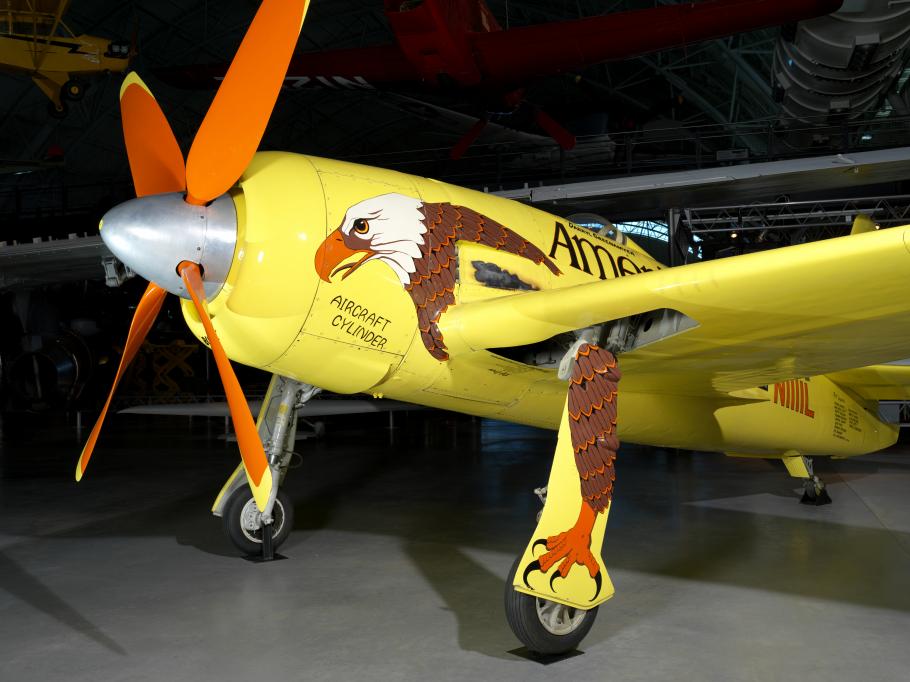The speed and competition of air racing drew test pilot Darryl G. Greenamyer to the National Championship Air Races, held every September near Reno, Nevada, beginning in 1964. World War II fighters were some of the most powerful propeller-driven, piston-engine aircraft ever made, so they were ideal for the Unlimited Class, which dictated no restrictions to limit performance. Greenamyer and a team of fellow Lockheed Skunk Works employees used their engineering creativity to modify a Grumman F8F-2 Bearcat into a purpose-built air racer. Grumman designed the Bearcat late in World War II as a replacement for the F6F Hellcat Navy fighter. It was noted for its exceptional climbing ability and maneuverability. Conquest 1 featured a shorter wingspan than the production Bearcat, a special small bubble canopy, a larger propeller taken from a Douglas A-1 Skyraider, and a propeller spinner from a North American P-51H Mustang. Special high-octane gasoline, fuel additives, and putty-sealed gaps to reduce drag greatly increased its speed.
With registration number N1111L and assigned race number 1, the racer was known first as the “Greenamyer Bearcat” between 1964-1965 and 1968, and then Smirnoff after the team’s main sponsor for 1966 and 1967 before being christened Conquest I in 1969. Greenamyer and his team won the Unlimited championship six times between 1965-1969 and 1971 with the Bearcat.
Greenamyer also pursued records with Conquest I. On August 16, 1969, they broke the 30-year-old speed record for piston-engine aircraft held by German pilot Fritz Wendel in the Messerschmitt Me 209. The 1970 documentary Man for the Record captured for posterity their achievement of reaching 777 kilometers (483 miles) per hour over the California desert. Moving on to other racing and record-setting aircraft, Greenamyer donated Conquest I to the Smithsonian in 1977.
Display Status
This object is on display in Aerobatic Flight at the Steven F. Udvar-Hazy Center in Chantilly, VA.
Object Details
Date
1948
Country of Origin
United States of America
Type
CRAFT-Aircraft
Manufacturer
Grumman Aircraft Engineering Corporation
Dimensions
Wingspan: 8.7 m (28 ft 6 in)
Length: 8.4 m (27 ft 8 in)
Height: 4.2 m (13 ft 8 in)
Weight, empty: 3,488 kg (7,690 lb)
Weight, gross: 6,121 kg (13,494 lb)
Top speed: 777 km/h (483 mph)
Engine: Pratt & Whitney R-2800, 3,100 hp (modified)
Inventory Number
A19770989000
Credit Line
Gift of the Fighter Aircraft Museum
Data Source
National Air and Space Museum
Restrictions & Rights
Open Access (CCO)
For more information, visit the Smithsonians Terms of Use.


